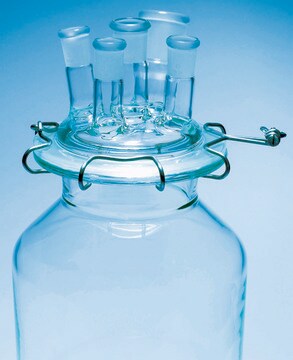267902
Titanium
wire, diam. 0.81 mm, 99.7% trace metals basis
Sign Into View Organizational & Contract Pricing
All Photos(1)
About This Item
Empirical Formula (Hill Notation):
Ti
CAS Number:
Molecular Weight:
47.87
EC Number:
MDL number:
UNSPSC Code:
12141746
PubChem Substance ID:
NACRES:
NA.23
Recommended Products
Quality Level
Assay
99.7% trace metals basis
form
wire
autoignition temp.
860 °F
resistivity
42.0 μΩ-cm, 20°C
diam.
0.81 mm
bp
3287 °C (lit.)
mp
1660 °C (lit.)
density
4.5 g/mL at 25 °C (lit.)
SMILES string
[Ti]
InChI
1S/Ti
InChI key
RTAQQCXQSZGOHL-UHFFFAOYSA-N
Application
Titanium wire may be used as a substrate for the sol gel deposition of solid-phase microextraction fiber.
Quantity
10 m (approximately 23 g)
Storage Class Code
11 - Combustible Solids
WGK
nwg
Flash Point(F)
Not applicable
Flash Point(C)
Not applicable
Personal Protective Equipment
dust mask type N95 (US), Eyeshields, Gloves
Certificates of Analysis (COA)
Search for Certificates of Analysis (COA) by entering the products Lot/Batch Number. Lot and Batch Numbers can be found on a product’s label following the words ‘Lot’ or ‘Batch’.
Already Own This Product?
Find documentation for the products that you have recently purchased in the Document Library.
Unbreakable solid-phase microextraction fibers obtained by sol? gel deposition on titanium wire.
Azenha MA, et al.
Analytical Chemistry, 78.6, 2071-2074 (2006)
A Kurbad et al.
International journal of computerized dentistry, 16(2), 125-141 (2013-08-13)
This article presents two novel options for lithium-disilicate restorations supported by single-tooth implants. By using a Ti-Base connector, hybrid abutments and hybrid abutment crowns can be fabricated for different implant systems. The latter option in particular is an interesting new
Jinho Shin et al.
Journal of nanoscience and nanotechnology, 13(8), 5807-5810 (2013-07-26)
In this study, hydroxyapatite (HA) was coated on anodized titanium (Ti) surfaces through radio frequency magnetron sputtering in order to improve biological response of the titanium surface. All the samples were blasted with resorbable blasting media (RBM). RBM-blasted Ti surface
R Khataee et al.
Journal of nanoscience and nanotechnology, 13(7), 5109-5114 (2013-08-02)
In the present study, self-cleaning and mechanical properties of white Portland cement by addition of commercial available TiO2 nanoparticles with the average particle size of 80 nm were investigated. X-ray diffraction (XRD), transmission electron microscopy (TEM) and BET were used
Study of a TiO2 photocatalytic coating for use in plasma catalysis.
K Van Wesenbeeck et al.
Communications in agricultural and applied biological sciences, 78(1), 227-233 (2013-07-24)
Our team of scientists has experience in all areas of research including Life Science, Material Science, Chemical Synthesis, Chromatography, Analytical and many others.
Contact Technical Service




